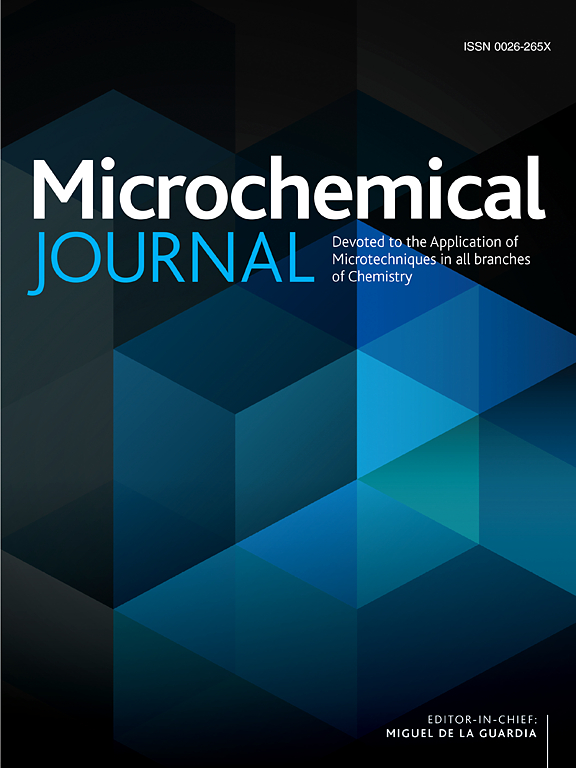Advanced microscale separation and mass spectrometry approaches for next-generation anti-doping in sports
IF 4.9
2区 化学
Q1 CHEMISTRY, ANALYTICAL
引用次数: 0
Abstract
Background
Clean sport increasingly depends on analytical tools able to outpace evolving clandestine doping tactics.
Approach
We systematically reviewed >300 peer-reviewed studies (2014–2025) and World Anti-Doping Agency (WADA) technical documents on microscale separation techniques—capillary and microchip electrophoresis, nano- and micro-flow liquid chromatography (PLOT, UHPLC, HILIC, LC × LC) and lab-on-a-chip workflows—and their hyphenation to modern mass-spectrometers (triple-quadrupole, Orbitrap/QTOF, ion-mobility, GC-combustion-IRMS).
Key advances
Microscale formats reduce solvent and sample use by >90 %, boost peak capacity, and, when coupled with dried-blood-spot or volumetric microsampling, enable minimally invasive, high-frequency testing. Online pre-concentration, active LC × LC modulation and sheathless nano-ESI now deliver sub-pg mL−1 limits of detection for anabolic steroids, selective androgen receptor modulators (SARMs), and peptide hormones, while collision-cross-section values resolve isomeric interferences.
Implications
These developments give anti-doping laboratories faster, greener and more sensitive assays, extend detection windows, and strengthen the Athlete Biological Passport with multiplexed peptide and metabolite read-outs—providing a proactive defence against emerging doping threats.

先进的微尺度分离和质谱方法用于下一代运动反兴奋剂
清洁体育越来越依赖于能够超越不断发展的秘密兴奋剂策略的分析工具。我们系统地回顾了300篇同行评审的研究(2014-2025)和世界反兴奋剂机构(WADA)关于微尺度分离技术的技术文件——毛细管和微芯片电泳、纳米和微流液相色谱(PLOT、UHPLC、HILIC、LC × LC)和芯片实验室工作流程——以及它们与现代质谱仪(三重四极杆、Orbitrap/QTOF、离子迁移率、gc -燃烧- irms)的联系。主要进展:微尺度形式减少了90%的溶剂和样品的使用,提高了峰值容量,并且,当与干血点或体积微采样相结合时,可以实现微创,高频测试。在线预浓缩,主动LC × LC调制和无鞘纳米esi现在提供亚pg mL - 1的检测限合成代谢类固醇,选择性雄激素受体调节剂(SARMs)和肽激素,而碰撞横截面值解决异构体干扰。这些发展为反兴奋剂实验室提供了更快、更环保、更灵敏的检测方法,延长了检测窗口,并通过多肽和代谢物的读出加强了运动员生物护照——为新出现的兴奋剂威胁提供了主动防御。
本文章由计算机程序翻译,如有差异,请以英文原文为准。
求助全文
约1分钟内获得全文
求助全文
来源期刊

Microchemical Journal
化学-分析化学
CiteScore
8.70
自引率
8.30%
发文量
1131
审稿时长
1.9 months
期刊介绍:
The Microchemical Journal is a peer reviewed journal devoted to all aspects and phases of analytical chemistry and chemical analysis. The Microchemical Journal publishes articles which are at the forefront of modern analytical chemistry and cover innovations in the techniques to the finest possible limits. This includes fundamental aspects, instrumentation, new developments, innovative and novel methods and applications including environmental and clinical field.
Traditional classical analytical methods such as spectrophotometry and titrimetry as well as established instrumentation methods such as flame and graphite furnace atomic absorption spectrometry, gas chromatography, and modified glassy or carbon electrode electrochemical methods will be considered, provided they show significant improvements and novelty compared to the established methods.
 求助内容:
求助内容: 应助结果提醒方式:
应助结果提醒方式:


